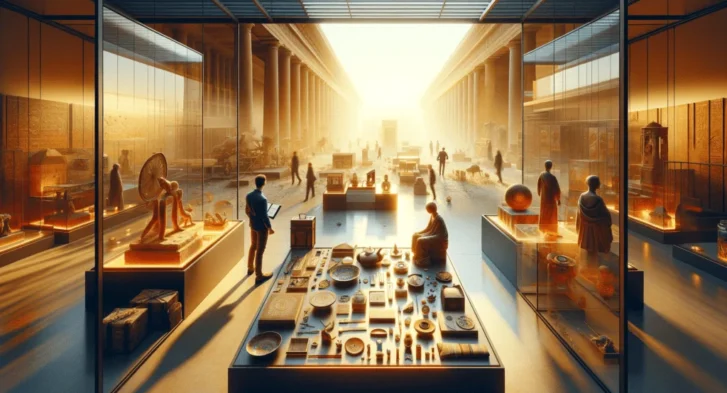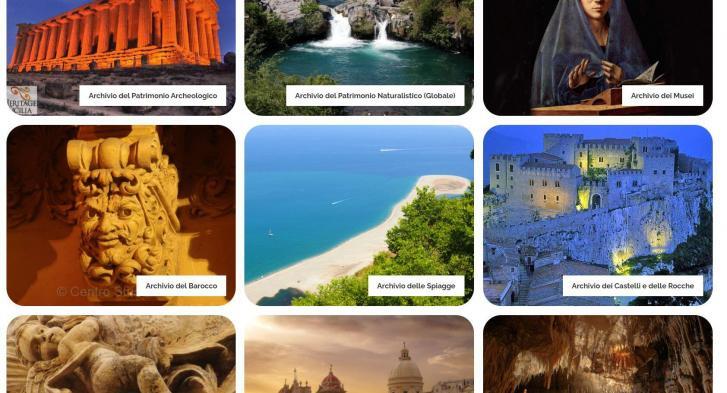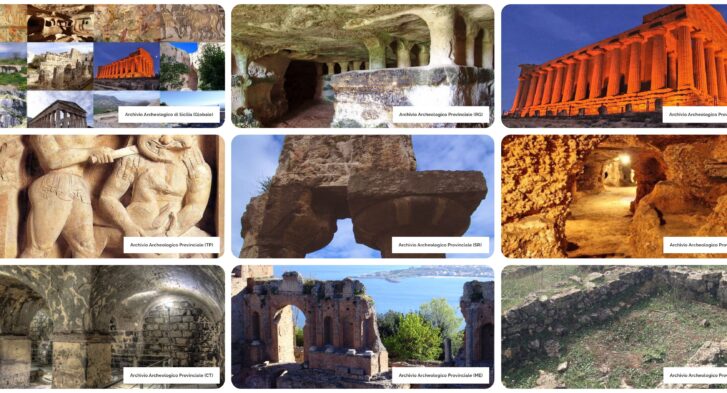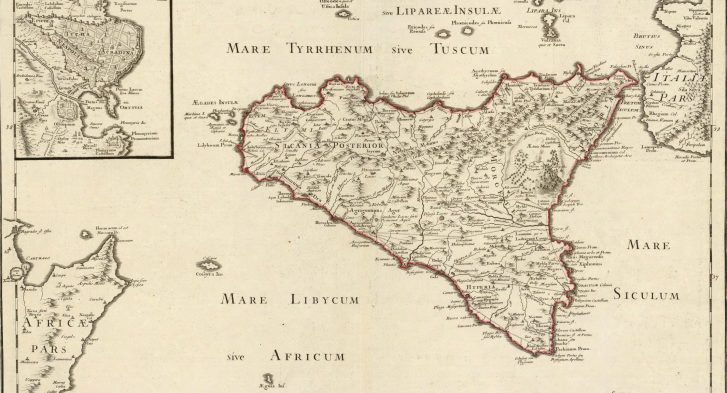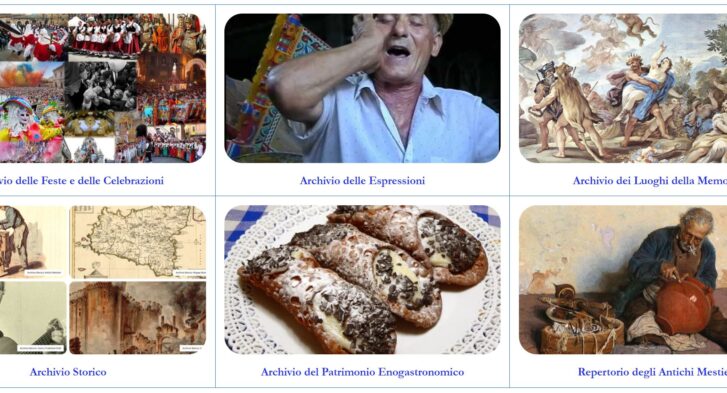Poseidon (Neptune)
by Ignazio Caloggero
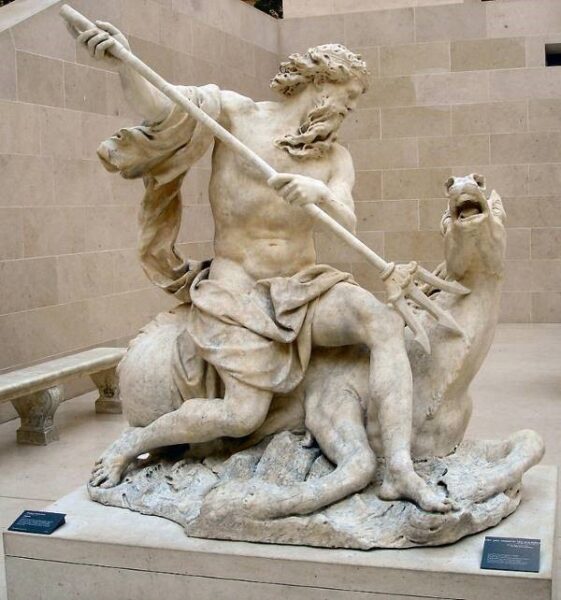
Neptune – Louvre Museum – Paris
Reference page: Repertory of Cults and Myths
Origins of the Myth
Identified with the Roman Neptune, Poseidon belongs, according to Greek mythology, to the caste of the Olympian gods.
Son of Sale need Cronos, is brother of Zeus need Pluto, with whom he shares the dominion of the earth. Zeus is considered the master of the sky, Pluto the master of the underworld and Poseidon the lord of the sea. He can unleash storms and even earthquakes by hammering the seabed with his trident and is often shown armed with a trident, a weapon used by tuna fishermen. Tuna is, in fact, one of his attributes.
He is often seen represented on a chariot pulled by horses, sometimes replaced by monstrous animals, half men and half snakes and the chariot is surrounded by fish, dolphins and sea creatures of all kinds.
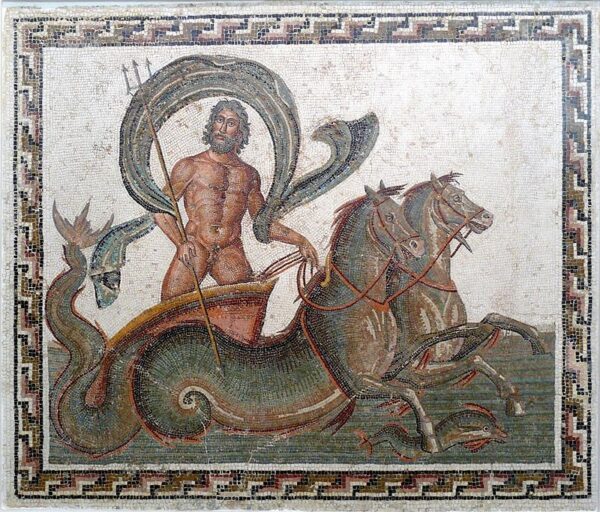
Neptune in the chariot pulled by Hippocampi. Mosaic, III century. d. C., from the villa in Wadi Blibane. (Sousse, Tunisia, Archaeological Museum).
The figure of Poseidon is linked to that of the horse, for this reason it can be hypothesized that perhaps he was not originally a sea god; in fact, before him, they were considered sea deities Ocean e Nereus. He is therefore also considered the lord of horses and is credited with the invention of horse racing. Other elements link him to horses. The sea, of which he is the lord, is, in fact, populated by beings with equine features: just think of the hippocampi that are half horses and half fishes; one of the many sons of Poseidon is the horse Arion had from a relationship with Demeter. What characterized the myth of Poseidon it is the large number of loves and children attributed to him; However, unlike the children of Zeus considered beneficial heroes, his children, as well as those of Aresthey were evil and evil. Among its innumerable offspring, the following are to be remembered: the cyclops Polyphemus who was blinded by Ulysses, the giant Chrysaore, the brigand Sciron killed by Teseo, the hunter Orione and the children they had from Alia of Rhodes who tried to rape their mother and which Poseidon, with a blow of his trident, made the earth swallow.
The Myth in Sicily
The cult of the god of the sea could certainly not be missing in a place surrounded by the sea like Sicily. Here he is considered the father of Trinaco, the oldest king of Sicily, but also of the king Siculo. The legendary people of the Laestrygonians, which would have populated Sicily in the most remote times, is considered his descendant.
There are traces of the cult of Poseidon a Syracuse, Selinunte and Messina; in the latter city, according to what was narrated by Diodorus Siculus (lib. IV.85), a temple in his honor would have been erected by his son Orione.
The discovery of coins depicting the divinity would attest to the presence of the cult also in other Sicilian cities such as Catania, Tindari, Palermo and Lipari [Emanuele Ciaceri: Cults and Myths of Ancient Sicily. p. 186].
The Myth in the IWB Register of the Sicily Region
The places of the myth of Poseidon have been included in the regional map of places and identity and memory (Places of myth and legends).
Interested places:
- Rock of the “Bad Council” (Trapani)
- Strait of Messina
The relationship of the Scoglio del Mal Consiglio with Nettuno is not clear, unless we consider what the writer reports Samuel butler (1835 – 1902) author of the book “The authoress of the Odyssey”. In the book, Butler associates the shape of the Mal Consiglio rock with Alcinoo's ship turned into stone at the behest of the god Neptune, enraged against the Phaeacians who had tried to bring Ulysses safely home.
Extract from the Book ” Cults of Ancient Sicily” by Ignazio Caloggero ISBN: 9788832060102 © 2022 Centro Studi Helios srl


